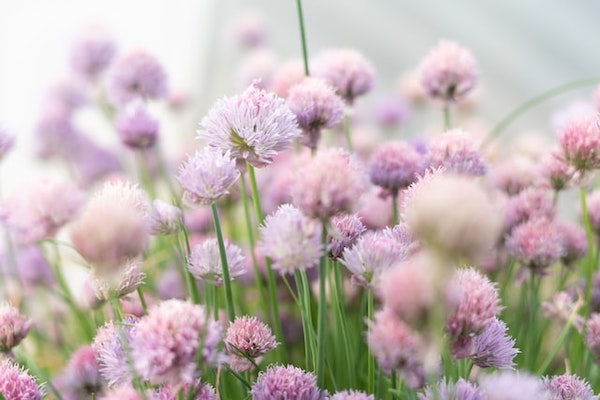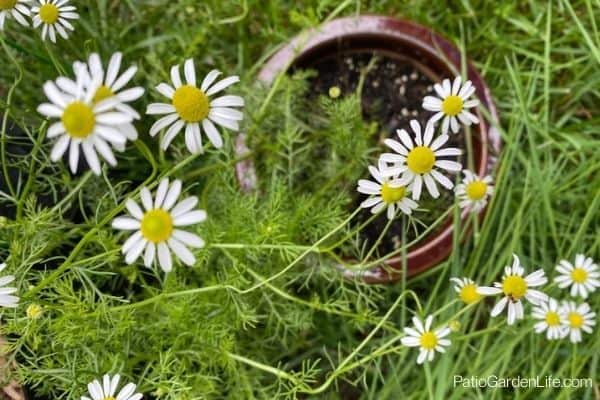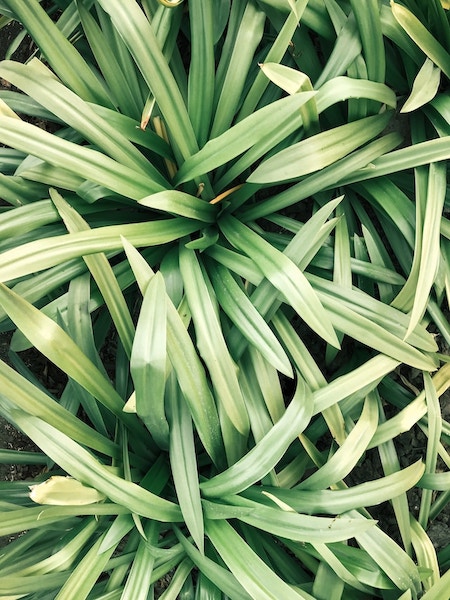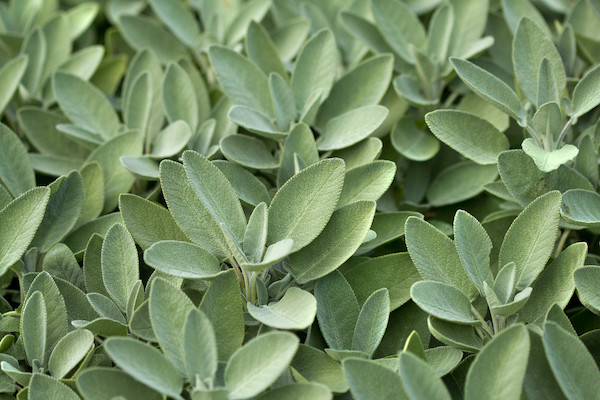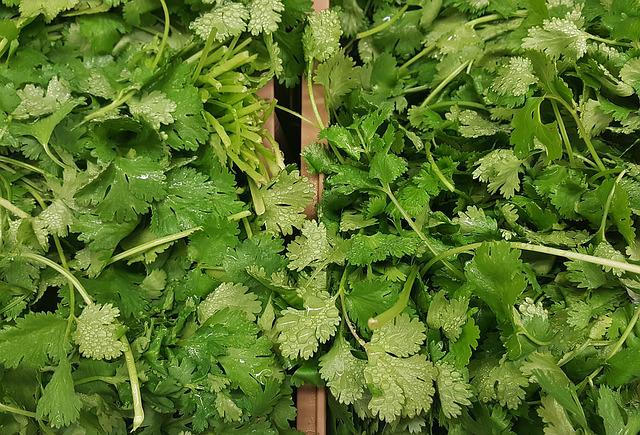Top 5 best container garden herbs for beginners
Easiest container herbs for beginning gardeners
While many herbs work well in containers, certain varieties stand out if you’re just starting to grow your own herbs at home. Below are our top 5 favorite container garden herbs for beginners! These plants are all super low maintenance, produce plentiful harvests and are simply satisfying to grow.
A few quick tips:
- Match the size of your container to the needs of your plant. Herbs are generally hardy and not fussy, so they’ll probably still grow just fine in tight spaces but won’t produce as much or as well. Also, always be sure your containers have at least 1-2 drainage holes. Good drainage is very important for container garden plants.
- The potting mix you use is also important, as herbs have limited access to nutrients in a container and need good soil to thrive. I recommend using a high-quality potting soil mix like Miracle-GRO or Fox Farm. Always avoid using anything labeled “garden soil” or “topsoil” in pots, as it isn’t designed for pots or the kind of drainage you need to avoid root rot. It can also harbor harmful pests and bacteria.
- As with all plants, sunlight is another important factor. Herbs generally need at least 6 hours of sun per day, but many can also thrive with closer to 4-5. Just make sure they’re not in full shade, and you should be fine. Some herbs are also sun-sensitive, like basil, which can sunburn. Watch your plants closely, and move them into a shadier spot if you see signs of burns.
- Learn more about these essentials and more in my posts about Potting Soil 101, Fertilizer 101 and Compost 101!
This post may contain affiliate links. If you buy something through these links, we may earn a small commission at no cost to you.
Basil
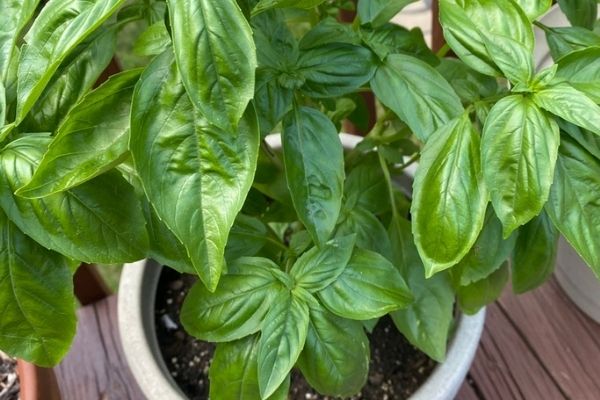
Whether you want to try making your own pesto at home or you’re craving caprese salads, there are so many tasty reasons to grow basil!
A moisture-loving plant, basil does best with regular watering and should be watered daily or when the top 1” to 2” of soil feels dry to the touch. Basil grows best in well-draining soil, so pot your basil in a 5-gallon container or larger (fabric grow bags are my favorite!). The larger the pot you use, the bigger your basil will grow.
During the peak of summer heat, basil will sometimes suffer from sunburn, so try to provide your plant with some afternoon shade. Alternately, try growing your basil in pots with tomatoes, as tomatoes will help shade your basil plants and your basil will, in turn, keep hornworms away from your tomatoes.
While Genovese basil is the most popular variety for pesto, for something different, try growing Thai basil, which features gorgeous purple stems and a savory, anise-like flavor.
For all the details about basil, check out my in-depth post, How to grow basil in a pot.
Rosemary
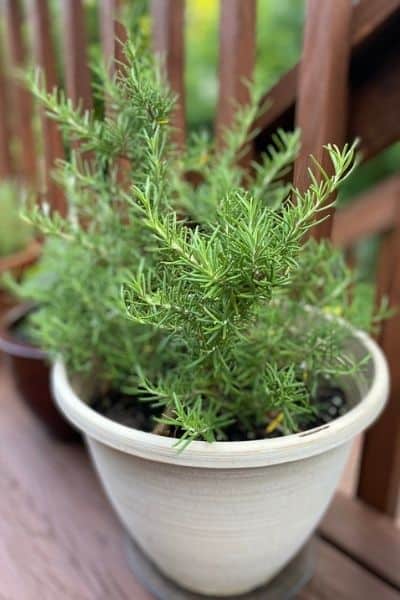
Rosemary is one of my very favorite herbs … and one of the best and easiest plants to grow in any garden. Its strong, woodsy taste makes it well-suited for warm, cozy dishes served up in the depths of autumn and winter. It’s also amazing on grilled meats and veggies in the summer and works especially well with chicken. Rosemary really sings in baked dishes and pairs particularly well with roasted vegetables and potatoes.
Happily, for rosemary lovers, this low-maintenance herb is one of the easiest to grow in containers. Because rosemary is only hardy to zone 7, if you live in a cold region, you’ll need to bring your rosemary indoors in winter, which is easier to do if you are already keeping it in small pots.
Native to the Mediterranean, rosemary loves well-draining soil and prefers infrequent watering. For this reason, only water your rosemary once every one to two weeks. If kept indoors, rosemary will need a bit of extra humidity, so place your pot on a pebble tray or mist it daily.
For all the details about rosemary, check out my in-depth post, How to grow rosemary in pots.
Chives

If you love the taste of onions and garlic, you’re sure to love the subtle, yet delicious, flavor of chives sprinkled on top of baked potatoes, casseroles or mixed into fresh garden salads.
To grow, provide your chive plant with at least an 8” pot and place in a bright, sunny location. Water your chives regularly, approximately when the top 1” to 2” of soil is dry to the touch. Fertilize monthly with a half-strength organic liquid fertilizer.
To harvest, simply snip off a few blades of chives to give your favorite dishes a quick flavor boost. If your chives flower, those purple blossoms work well as salad toppers; however, pollinators love them too, so consider leaving them in place for the bees!
Cilantro

If you love cooking Mexican or Indian recipes, your herb garden just won’t be complete without a bit of cilantro.
Like basil, cilantro loves moisture, so keep your plants well-watered. Cilantro generally doesn’t tolerate heat well and tends to bolt when temperatures rise, which can change its flavor. To prevent bolting, water your plants frequently and locate them in areas where they receive afternoon shade.
Try succession planting seeds every two weeks to ensure you have a continual harvest throughout the growing season.
Another great way to prevent bolting in cilantro is to look for bolt-resistant seeds, such as ‘Slo-Bolt’ cilantro.
Mint
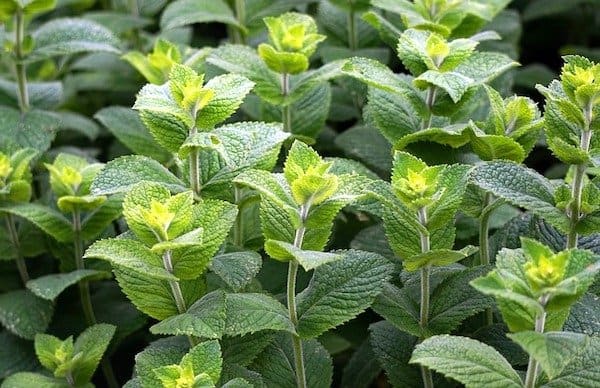
If you’ve ever tried growing mint in your raised beds or in-ground garden, you know how vigorous and potentially invasive it can be. But in containers, where its wild growth habit is restricted, mint really shines.
Great in smoothies, desserts and Mediterranean dishes, mint is incredibly easy to grow. Simply provide your plant with bright sun, regular watering and an annual organic nitrogen-rich fertilizer application in early spring when new growth is just beginning. Beyond that, this super low-maintenance plant will grow happily with little intervention.
If your mint begins to flower, snip off those blooms if you want to encourage your plants to grow bushier – or just allow them to bloom. Pollinators love mint flowers!
For all the details about mint, check out my in-depth post, How to grow mint in pots.

